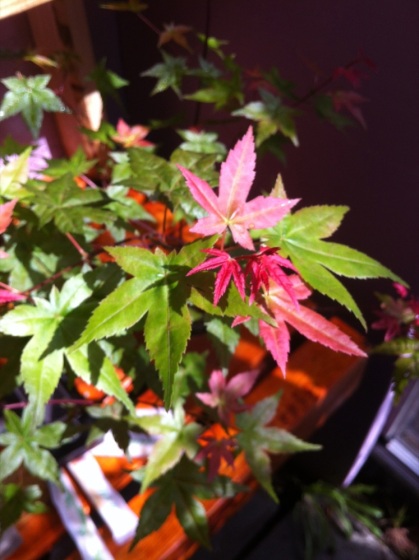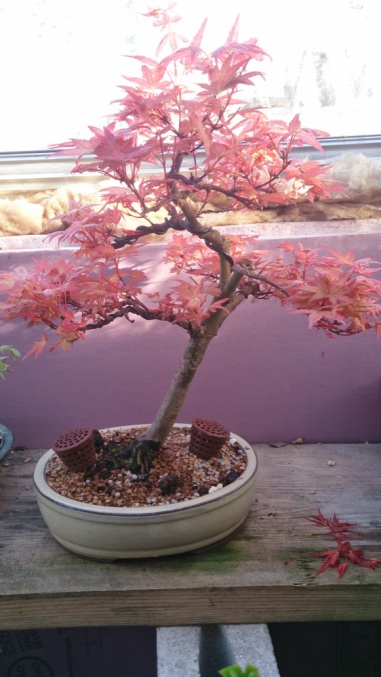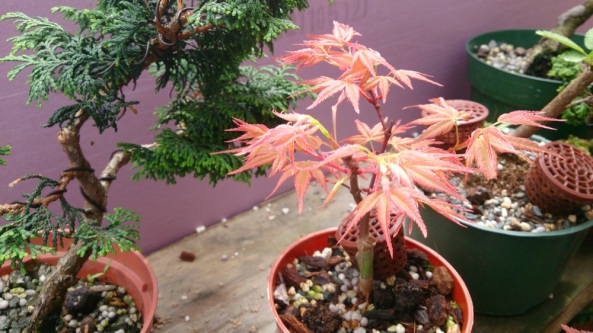Japanese maples are among the best suited if not best suited for bonsai culture. In addition to being relatively easy to maintain healthy in pot, leaves remain very small, thus helping to give the impression of a gigantic tree while remaining small. Finally, the most important feature for me is that there are hundreds of different cultivars of Japanese maples that will vary in color and shapes. Those cultivar will please even the most selective of us! Here are some cultivars suitable for growing bonsai and their characteristics.
A) The natural harbor cultivars with green leaves
1) Japanese Maple base variety, palmatum Acer palmatum
It is the variety found in nature in Japan, the variety of which all others flow. Its port is normal and its leaves come out with a pink outline green in spring and turn bright red in autumn. Despite the fact that there are other cultivars with more specific colors, palmatum palmatum is still widely used for bonsai because it is the strongest of all and therefore easier to develop and maintain bonsai .
2) select Japanese Maple, Acer palmatum select
This variety has been selected by Yves Létourneau, who owns a nursery specialized in bonsai in Quebec province. After selecting multiple seedlings especially for growing bonsai, he came to develop a cultivar that he calls select. Its colors are very similar to the original palmatum but the outline is pink in spring is a little more defined. Where the cultivar really stands out from the others, it is by the cut shape of its leaves, which is mid-way between those of an Acer palmatum dissectum and an Acer palmatum standard. The dissectum leaves are interesting but generally too large to give good bonsai. In contrast, those of select remain small and give depth and texture to the foliage of the tree. In addition, the cultivar has a beautiful bright green and is easy to maintain good health, just as palmatum palmatum.
3) Japanese Maple cork bark, Acer palmatum arakawa
This variety is especially appreciated for its rough bark and aged appearance that develops quickly. The foliage is also quite interesting considering its leaves are well-cut and have a pink outline. However, the branches have to be well ramified to obtain a leaf size small enough to be interesting. As we can see from this picture, the fingers of the leaves are long enough.
In return, the appearance of the bark is very interesting.
4) Japanese Maple orange dream, Acer palmatum Orange Dream
I have not yet seen an amazing bonsai of this variety, but it has all the qualities needed to get there. Normally, the leaves should be orange in spring. In my case, until now, I have only observed the color below the spring. In some cases, the color intensifies a little with age. It is also said that the colors of Japanese maples are more vibrant when the substrate is slightly acidic, around pH 6.
The cultivar however, I was very beautiful colors orange in the fall:
B)Dwarf cultivars
5) Sharps pygmy Japanese Maple, Acer palmatum sharps pygmy
This cultivar is definitely one that I want to buy soon. The leaves are small, close and cut. The foliage in summer is in my opinion one of the most brilliant and the fall colors are red purplish. Like all the other dwarf varieties, it is easy to grow bonsai. Here is a photo of a Sharp’s pygmy who won the prize for the most beautiful leafy nationally Rochester in the US exposition.
6) kashima Japanese Maple, Acer palmatum kashima
Among the varieties whose leaves emerge in spring green, this one is my favorite. The leaves are of an elegant pale green, lighter than other Japanese maple varieties. The leaves are quite small and the tree tends to grow much more in width than in height. In this sense, it is not complicated to get backbudding.
7) Kiyohime Japanese Maple, Acer palmatum Kiyohime
This cultivar is known to have very brittle branches upon wiring. That is why it is best to wait for the spring before the buds begin to swell for wiring. Despite its fragility, this species is highly prized for bonsai because of the incredible branching it is capable of achieving. This cultivar has the ability to become as dense as a trident, which is unusual for a Japanese maple. Thereby, the density that can reach Kiyohime also ensures that the leaves can be very small.
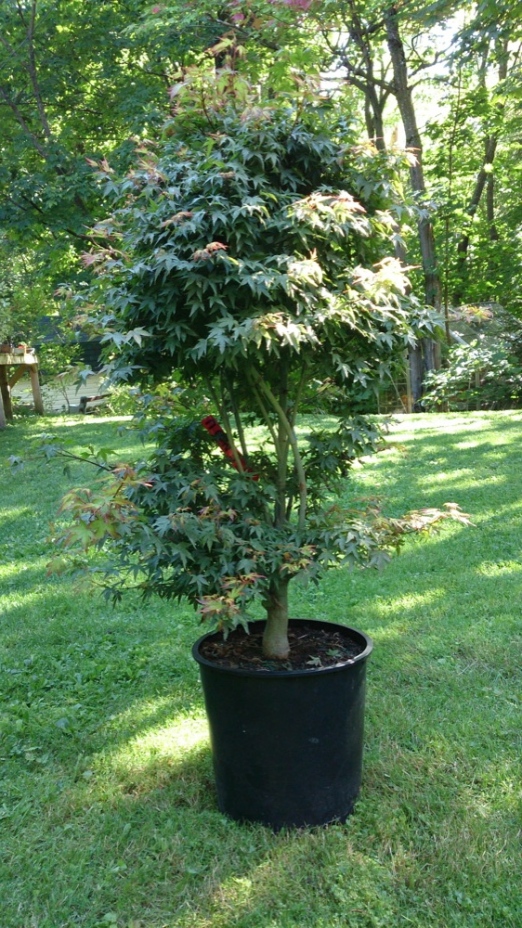 8) kotohime Japanese Maple, Acer palmatum Kiyohime
8) kotohime Japanese Maple, Acer palmatum Kiyohime
This species is very difficult to make bonsai because its branches grow straight up with very tight internodes. We can still achieve an original and interesting result:
8) Shishigashira Japanese Maple, Acer palmatum Shishigashira
This very special cultivar has a unique foliage by its relief and form. In Japanese, Shishigashira means “lion head” since it recalls a lion’s mane with his organge fire foliage in the fall. Several absolutely stunning specimens are regularly presented in Japanese exhibitions these days, which makes me think that this cultivar is very popular now in Japan.

Unknown source
C) cultivars with red leaves in spring
9) Deshojo Japanese Maple, Acer palmatum Deshojo
This cultivar is in my opinion one of the most spectacular. His blood red leaves in spring are absolutely spectacular in bonsai. However, as the big shows like kokufu and Taikan-ten-ten place in winter in Japan, we do not see some of these cultivars in large exhibitions. This is explained by the fact that the Deshojo does not reach a density as good as varieties with dwarf habit as Kiyohime and Shishigashira. Nevertheless, the cultivar offers us two weeks of pure happiness in spring and beautiful photos.
10) shindeshojo Japanese Maple, Acer palmatum shindeshojo
This variety is essentially the same as the Deshojo. It is said that the red foliage shindeshojo lasts even longer than the Deshojo.
11) beni hime Japanese Maple, Acer palmatum beni hime
This variety gives a gum pink spring foliage to whom is able to get hold of this Japanese maple variety. On its own roots, this cultivar is very weak and fragile. It grows thereby very slowly. Most specimens are grafted but growth still remains very slow. This ultimately has the enormous advantage that the leaves of this variety are the smallest of all the cultivars present in this article. One can also get a very dense foliage with this species. The combination of color and leaf size is very interesting if we can find a tree with an interesting size trunk.
12) Japanese Maple beni chidori, Acer palmatum Beni chidori
I had so much trouble to get their hands on a tree of this variety that it has become my favorite. The cultivar has it all: a foliage shrimp pink in spring, small leaves, a dwarf habit and rapid growth help to make this species more and more popular.

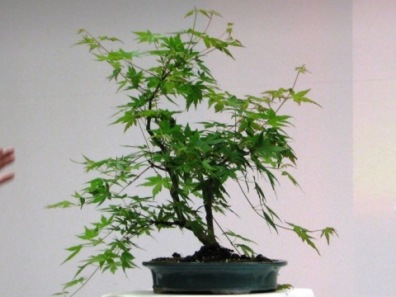
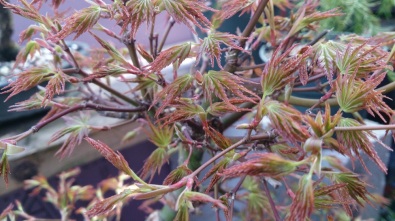
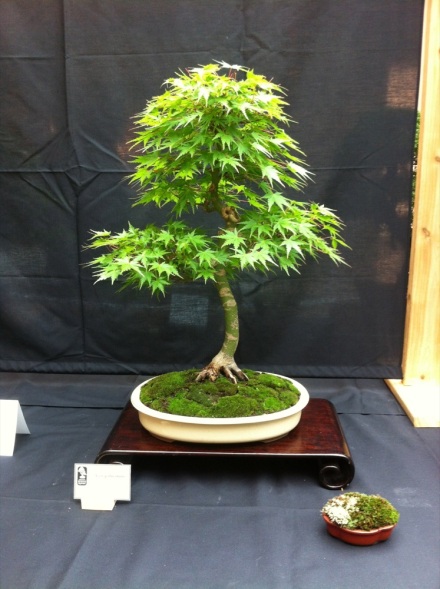
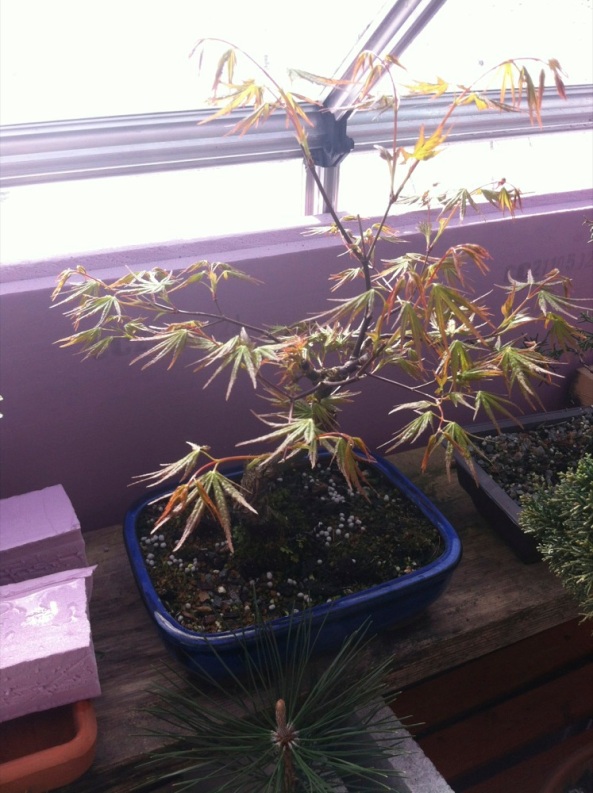
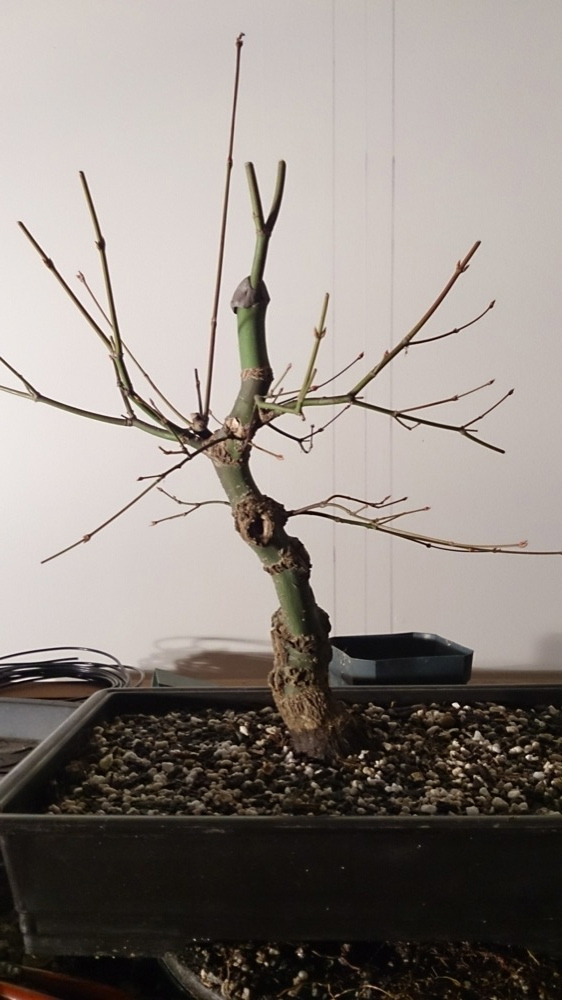
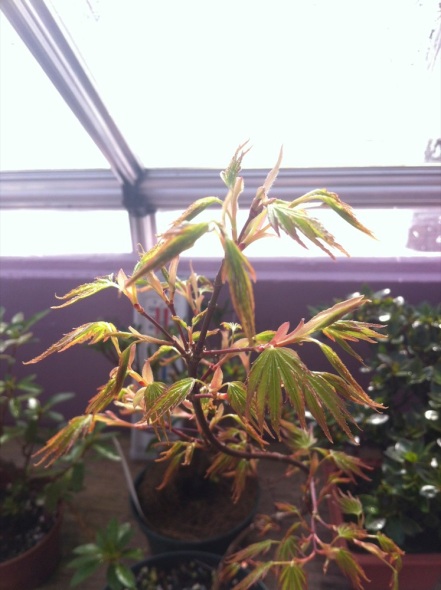
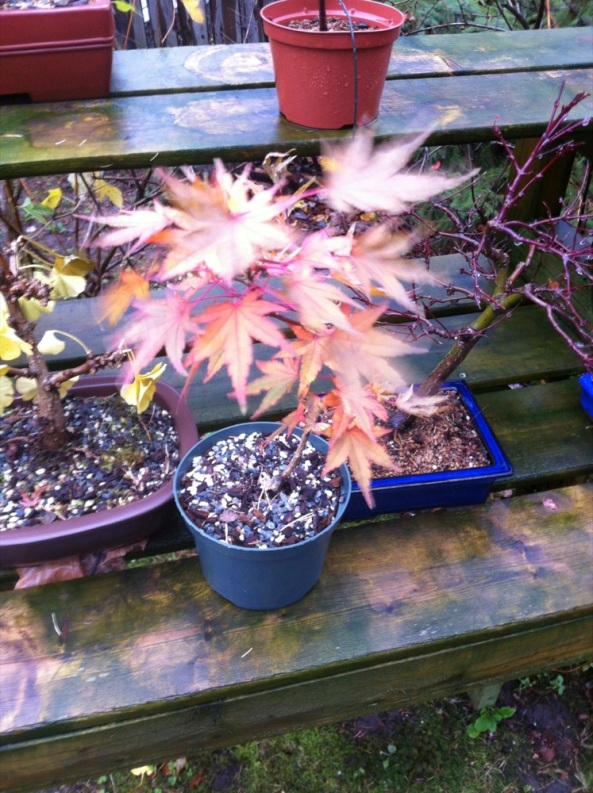

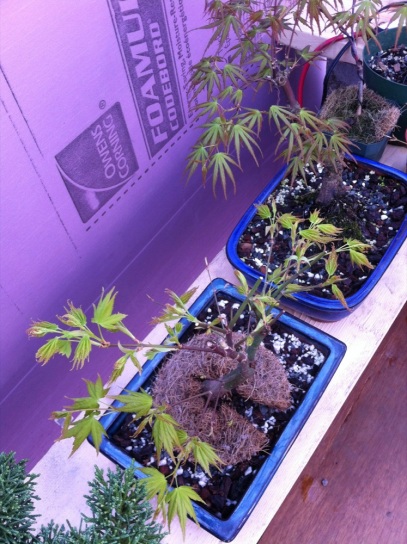


.jpg-for-web.jpg)
